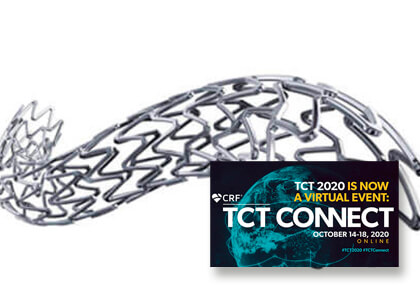Following with aspirin alone after a short period of dual antiaggregation therapy (DAPT), 1 to 3 months, did not increase ischemic events in patients receiving a Xience stent while significantly reducing bleeding.

This study endorses the safety of short DAPT with contemporary drug eluting stents (DES) in patients presenting high bleeding risk.
The XIENCE Short DAPT program tested the safety of 1 and 3-month DAPT in 3600 patients. On the one hand, the XIENCE 90 included over 2000 patients receiving 3-month DAPT and on the other hand the XIENCE 28 included 1500 patients receiving only 1- month DAPT. Both studies were prospective, open, non-randomized and compared against historical cohorts.
All included patients were at high risk of bleeding based on the presence of at least one of the following characteristics: > 75 years, chronic anticoagulation, high bleeding risk within one year of index angioplasty, a history of stroke, kidney failure, coagulation alteration or anemia.
Read also: TCT 2020 | Acurate Neo Does Not Meet Non-Inferiority vs. CoreValve Evolut.
Patients with ST elevation MI, ejection fraction <30% or with pending surgery in the following months were excluded.
After index PCI with the XIENCE stent, patients received aspirin with a P2Y12 receptor inhibitor. After 1 or 3 months (depending on the study) they continued with aspirin alone.
Both the XIENCE 90 and the XIENCE 28 showed non-inferiority as regards the primary end point of death or infarction vs. XIENCE V control all-comers.
Read also: TCT 2020 | Crushed Prasugrel Administration prior PCI.
The secondary end point of BARC 2 to 5 bleeding resulted 5.1% with 3-month DAPT vs. 7% of the control patients (p=0.0063 for superiority). The group that received one- month DAPT showed a bleeding rate of 4.9% vs 5.9% in the control group (p=0.19 for superiority).
Major bleeding (BARC 3 to 5) resulted far less frequent in both studies. For the XIENCE 90, major bleeding rate was 2.2% vs 6.3% in the control group (p<0.0001) and for XIENCE 28 of 2.2% vs 4.5% (p=0.0015).
Original Title: The XIENCE Short DAPT Program: XIENCE 90/28 evaluating the safety of 3- and 1-month DAPT in HBR patients.
Reference: Presentado por Roxana Mehran en el congreso TCT 2020 virtual.
Subscribe to our weekly newsletter
Get the latest scientific articles on interventional cardiology





